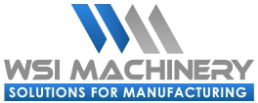ACMOS 1124B
Acmos 1124B is a silicone-free, proactive release agent specifically designed for a range of hot press platens and machinery components. Its primary function is to deter adhesive residues from adhering to press platens and equipment, thus preventing unwanted bonding. Moreover, it servers to inhibit wood surfaces from sticking to the press platens. Acmos 1124B is particularly effective with adhesives based on PVA, urea formaldehyde, melamine resins, and pMDI binders. Not only does it ensure clean press surfaces, but it also promotes high-quality finishes. Compatible with top machinery brands, it offers reliability and performance across various applications.
ACMOS 1124B Features:
- Silicone-free formula ensures no greasy residue affecting post-treatment
- Prevents adhesive residue from adhering to press platens
- Easy application process
- Compatible with UF, MUF, resins, pMDI binders and PVA adhesives
- Available in both gel and sprayable forms
- Light-colored or sensitive woods remain unaffected or unblemished
- Consistent application eliminates the necessity for abrasive cleaning techniques
Application: Spray / Pull-Bar - Apply a thin layer to heated surfaces or heat plates to create a durable protective film. Reapply as necessary depending on production frequency to prevent adhesive buildup. Use a cloth, brush or drawbar (felt sheet) for application, ensuring it's only applied to hot surfaces or heat press plates for optimal results. This method produces a densely fused, resistant protective film. It enables easy removal of residual adhesives without causing surface damage and is compatible with anodized heating plates/press plates, suitable for all pressing temperatures, including those exceeding 120°C. Additionally, it has no adverse effects on rubber components.
Recommended Uses: Hot pressing, radio frequency gluing systems, veneer pressing, short cycle pressing, laminating, machine parts: press platens, heater bars, veneer splicer heater bars, cross feed veneer splicer heating plates.
NON Hazardous/Hazmat for DOT Shipping
Available Container Amounts:
Kg: 1 (Qty 12, Sold by Case) | 20 | (2-pack) 40 | 180
Gallons: 0.3 (Qty 12, Sold by Case) | 5.6 | (2-pack) 11.2 | 50
TECHNICAL DATA SHEET:
Basis:
No substances regarded as toxic or carcinogenic according to the Regulation concerning Dangerous Substances are used in the production of ACMOS 1124B.
Range of application:
Apply as thinly as possible with a cloth or drawbar (felt sheet). Always apply release agents only to hot surfaces or heat press plates after application. A densely fused, resistant protective film is produced only in this way.
Properties:
ACMOS 1124B does not contain oils or silicones. It is compatible with staining and varnishing. Even light-colored or sensitive woods are not discolored or attacked. ACMOS 1124B protects the surfaces of the press plates; the veneered surfaces do not adhere to the press plates and glue residues can easily be removed. Suitable for all pressing temperatures even above 120°C. No effect on rubber. Extremely good compatibility with the skin. Can also be used on anodised heating plates/press plates.
Physical and chemical properties:
Form: Gel
Appearance: White
Smell: Characteristic
pH-value (0 g/l): 7.00 ; DIN 19268
Flashpoint: 62°C ; DIN EN ISO 3679
Stockage:
Storage temperature: between 10°C and 30°C
Maximum Storage: approx. 9 months
Processing:
Why release agents are important
Release agents are critical to prevent glue and adhesives from sticking on both edgebanding machining tools and workpiece surfaces. They are developed in a liquid form and as such can be used in both automatic and manual edge processing.
Release agents are sprayed on the top and bottom of the workpiece edge areas. This prevents adhesive residue from sticking to the workpiece. Release Agents work with a variety of glues and adhesives for high-quality woods, veneers, and plastic-coated surfaces.
Advantages
Reduces production downtime due to cleaning. The process of edging can lead to unwanted glue residue on materials and equipment. Without the use of a release agent, glue residue can quickly stick and become very difficult to clean and remove. This results in a loss of production and machine downtime. Production employees are forced to spend valuable time cleaning up, instead of streamlining the manufacturing process. By using a release agent, a thin, barely visible lubricant film is formed, which prevents the adhesion of glue residues, thus avoiding time-consuming cleanup work.
Helps maintain production equipment. A common problem with edge processing is undesired glue buildup on machining tools. Glue buildup can cause unnecessary wear and tear on tools and lead to increased machine maintenance and costs. The continuous use of release agents protects the components of an edgebander, such as pressure rollers, trimming tools, hot melt adhesive tanks and buffing wheels against glue buildup. Using release agents is very important to the longevity of equipment.
Promotes high-quality finishes. Perfect, high-quality surfaces are a premium for edgebanding. During application, glue squeeze out occurs, which often creates glue lines and residue, thus affecting the quality of finished products. Release agents used during the edgebanding process prevent adhesive residues from sticking, while protecting the edge and foil from marks and friction, thus providing excellent surfaces.



